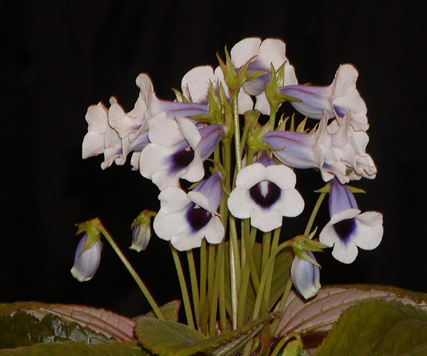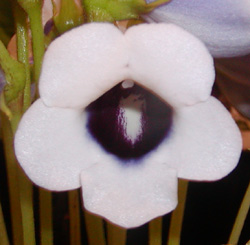Sinningia speciosa 'Carangola'
This variety of the species has dramatically colored flowers and grows larger than most other varieties.

Probably the most dramatic natural variety of Sinningia speciosa is the one called "Carangola". It is a very large plant with large white-and-bluish-purple flowers. The leaves have a sort of eumorpha look to them, but are borne in the standard speciosa decussate rosette.
All three pictures on this page were taken at the 2008 Gesneriad Society convention in Denver. The plant was exhibited by Bill Price.

